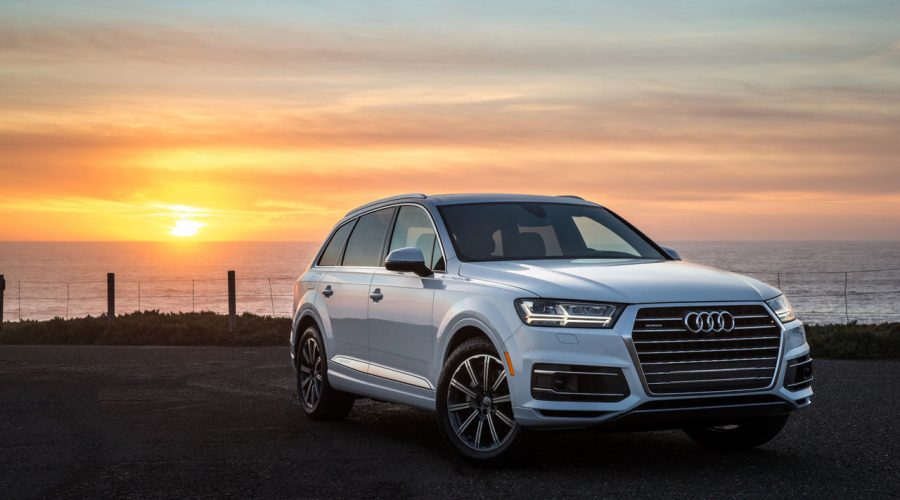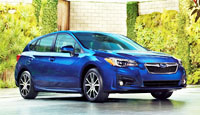
Audi and Subaru have been named best Mainstream Brand and best Premium Brand respectively in ALG’s 2018 Canadian Residual Value Awards (RVA), an important benchmark used for forecasting future vehicle values by auto industry professions.
Now in its 10th year, ALG’s RVA projects future values of new models from 26 separate market segments, ranging from “Alt-fuel” to “Fullsize Commercial Van” and everything in between. There are many ways to measure value, although within the car industry the difference between the initial price paid for a new vehicle and its resale value after three or four years is a key parameter. ALG uses the average ownership duration of four years to determine mainstream volume brand values and three years for premium brands, with the results showing both Subaru and Audi are tops in their respective sectors.
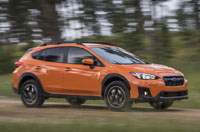
“Depreciation is the single biggest cost of vehicle ownership, and informed consumers understand the importance of resale value when making their purchase decision,” said Eric Lyman, vice president of ALG. “The ALG Residual Value Award is a meaningful achievement in the hyper-competitive automotive landscape. Residual values are a key indicator for the market success of a vehicle, factoring in quality, product execution and brand desirability as primary drivers of ALG’s forecast.”
This is Subaru’s fourth consecutive RVA mainstream brand win, showing an impressive consistency in quality, execution and desirability. This year the brand earned four segment awards, including the Impreza in the “Compact” class, the Crosstrek in the “Subcompact Utility” segment, the Outback in the “Midsize Utility 2nd Row Seating” segment, and the WRX in the “Sportscar” segment.
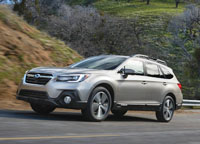
Other notable mainstream brands include Toyota that dominated SUV and truck segments with five RVAs including the Tundra achieving its eighth consecutive year topping the “Fullsize Pickup” category, the Tacoma at five RVA “Midsize Pickup” class awards in a row, the Highlander winning the “Midsize Utility 3rd Row Seating” segment, the 4Runner in the “Off-Road Utility” class, and the Sequoia earning top marks in the “Fullsize Utility” category. Honda received three RVA segment awards including the Fit in the “Subcompact” class, Accord in the “Midsize” category, and Odyssey in the “Minivan” segment.
Nissan managed two winners including the Rogue in the “Compact Utility” class and Maxima in the “Fullsize” segment, while the only one-off deserving mention is Kia’s Niro in the “Alt-fuel” category.
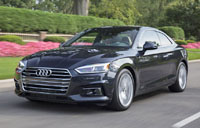
Audi, which has experienced a dramatic upsurge in new vehicle sales in recent years, achieved four category wins including the A5 in the “Premium Midsize” class, A7 in the “Premium Fullsize” segment, Q5 in the “Premium Compact Utility” segment, and Q7 in the “Premium Midsize Utility 3rd Row Seating” category.
“Audi has emerged in recent years as a contender in the luxury space against top European rivals, finding success with new product entries in the utility space and emphasizing innovative technologies that have resonated well with luxury consumers,” stated an ALG press release.
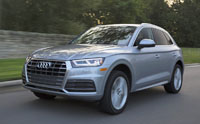
Mercedes also took home four awards, albeit with two in the commercial sector. The winners included the Metris in the “Midsize Commercial” segment and the Sprinter in the “Fullsize Commercial” category, while its CLA Class took home top marks amongst “Premium Compact” models, and the G-Class achieved the highest score in the “Premium Fullsize Utility” segment.
No other premium brand earned multiple RVAs, but notable mentioned include the Maserati Quattroporte in the “Premium Executive” class, the Porsche 718 Boxster in the “Premium Sportscar” segment, and the Land Rover Range Rover Velar in the “Premium Midsize Utility 2nd Row Seating” category.

